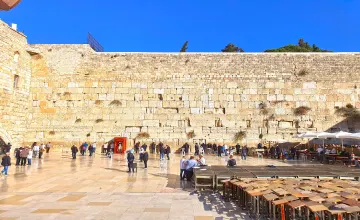Jerusalem in the time of the Second Temple
Jerusalem travel guideA Journey following Jerusalem in the time of the Second Temple
The Second Temple period, between 538 BCE and 70 CE is considered to be a time of Jerusalem’s glory. This is due to the magnificent castles and walls that were built in the city, especially towards the end of the 600 years, with the rise of King Herod. The temple, built in 516 BCE by the Jews returning to Zion after the Babylonian exile was the heart of the city till its destruction in 70 CE. Having said that, one must understand, that the political and social situation in those days was extremely complex, with so many different religious streams trying to get hold of the spiritual leadership in Jerusalem, it seems that the rip inside the Jews, was what inevitably brought to Jerusalem’s destruction by the Romans. This suggested tour follows some of the archeological milestones of the time through the old city and its surroundings, which give light to the historical period and political background of the time as well.
Probably the best way to start off the journey would be by visiting the Model of Jerusalem in the late second Temple Period, located at the Israel Museum. The model, which is the size of 2,000 square meters at a 1:50 ratio, displays the entire city at that time from a birds view, showing off the temple and the roads and buildings surrounding it.
After having seen the model and understanding the destruction the city went through (by comparison to what’s left today) it’s time to go to the Old City. Entering through Jaffa gate, we will already be able to see parts of the Second temple’s time architecture. Originally believed to have been built by King David, the Tower of David situated at the entrance to the old city, was actually built during the time of the second temple by the Hashmonaim, as noted by Josephus Flavius, a historian who lived in the time of the great revolt. Later on it received a face lift and two more towers around it, as part of Herod’s plans of glorifying the city. After the destruction of the city once more, the ancient citadel continued to serve the Romans as barracks for their soldiers. Throughout the years, the tower had been destructed and reconstructed by many, yet still the lower layers of the tower and of the old wall, are genuine to the period.
Passing the tower, we head to the Jewish Quarter to the Wahl Museum of Archeology, also known as the Herodian Suburb. The museum depicts life in the time of the second temple in Jerusalem. Original mosaics, stone tools and various objects of art portray the high quality of life experienced at the time in the city. In order to complete the picture it’s recommended to continue to the excavated Burnt House, said to have been burned by the Romans, where you can watch a 12 minute audio–visual presentation about the political and social events which led to the house’s burning.
Ending the tour near the western wall, you can either choose to walk underground through the Western Wall Tunnels, where you can take a tour of the most ancient layers of the wall, or walk above ground in the area of The Archeological Garden of Jerusalem. There you can see the excavated Robinson’s Arch which once stood at the southwestern corner of the Temple Mount as well as the old market street and the steps that used to lead to the temple up until 70 CE.







